Seasons – Fall 2013

Dear friends of Plateau,
Another beautiful, Texas fall is upon us. And although it may still feel like the tail end of summer, we all know that deer and quail season, crisp fall weather, changing leaves, and yes, even the holiday season, are right around the corner.
Fall also brings a rejuvenated excitement for life and an eagerness to reconnect with the land. This spirit is reflected in this issue of Seasons, in which we highlight several opportunities to improve and enjoy your land while also knocking out a few compliance activities before the end of 2013. Check out our Wildlife Management Fall Activities Checklist for guidance on which activities to focus on this season, watch our Game Management Video on Deer Spotlight Counts to build on your excitement for hunting season, and if you’re thinking about implementing a brush management plan this fall, be sure to read up on our new partnership with Cedar Eaters.
Here at Plateau we are also gearing up for fall by providing our clients, friends, and colleagues plenty of educational opportunities to expand your knowledge of Wildlife Management Tax Valuation (WMV). Attend one of our WMV seminars in a city near you, or catch a webinar on a number of exciting land and wildlife topics from your home computer or mobile device.
We hope this issue of Seasons will help jump-start your celebration of fall, and if there’s any way that Plateau can help you protect, enhance, or better enjoy your land during this special season, just give us a call. We’ll be here when you need us.
Tim Milligan
Director of Sales
Plateau Land & Wildlife Management
(512) 894-3479
[email protected]
Table of Contents
Announcing: Plateau Seminars and Webinars this Fall
A lot of Rest and a Little Rain
Game Management Video: Spotlight Deer Counts
Braun & Gresham Legal Webinar Series
Client Photo Spotlight-How Many Licks Will it Take to Get to Get to the Center?
Fall Wildlife Management Activities Checklist
Plateau Announces New Partnership with Cedar Eaters
Notes from the Field: The Davis Mountains in Summer- A Nature-Lover’s Paradise
Growing Affiliation with Texas Outdoor Partners Opens Direct Line for Plateau Clients to Texas Legislature
Mission Mentions: Kameron Bain
Announcing: Plateau Seminars and Webinars this Fall
Wildlife Management Seminars by Hope Bolton, Sales and Marketing Assistant
Every fall, Plateau Account Managers travel around the great state of Texas to educate folks about the many benefits of Wildlife Management Tax Valuation (WMV). These seminars are free and open to anyone interested in learning more about WMV. While visiting more than 10 cities from September-October, Plateau Account Managers, Craig Bowen and Kasey Mock will cover:
- An overview of Wildlife Management Tax Valuation (“Wildlife Exemption”)
- The 7 wildlife management activity categories
- Traditional Ag vs. Wildlife…is it right for you?
- State & county requirements
- Concrete answers to concerns that plague many landowners
- How Plateau can help
Though some of you may already be under a WMV, these seminars will also benefit you, and anyone who owns rural land in Texas, including those who are currently in Ag.
Can’t make it to a Plateau seminar? Join us for a Webinar!
Beginning TODAY, Friday, September 20th, Plateau will be hosting a webinar every Friday from 12-1pm through early November. These topics will vary, with an ‘open forum’ style webinar on Wildlife Management Tax Valuation every other Friday, and a curated topic (as requested by Plateau landowners in a recent poll) on all alternating Fridays.
- September 20th (TODAY!), October 4th, October 18th, November 1st | Open Forum Q&A on Wildlife Management Tax Valuation
- September 27th | Managing for the Worst Case (Wildlife During a Drought)
- October 11th | Grazing and Fire: From the Top Down
- October 25th | Wildlife Management Valuation Record Keeping
- November 8th | Farm to Fallow: Returning Ag Land to it’s Native State
To read full descriptions of these webinar topics, CLICK HERE.
To join any Plateau webinar listed above, just CLICK HERE at 12 pm on your date of choice:
Back to TopBack to Top
A lot of Rest and a Little Rain
By Shane Kiefer, Director of Ecological Services
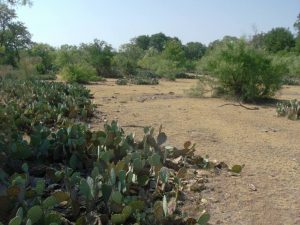
This photo was taken in 2011 shows effects of severe, long term over grazing exacerbated by the recent drought.
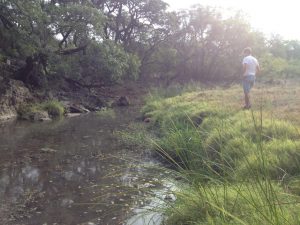
The recovered riparian area in 2013.
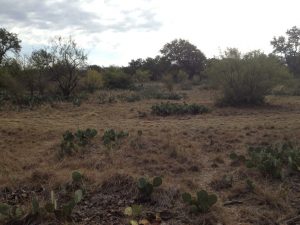
Although the ground looks brown and dead, the warm season species are coming along with a lot of rest and a little rain.
I recently had the opportunity to re-visit a property north of Mason that Plateau has been working with for over 2 years. When I first visited in late 2010, the ranch had been subject to decades of overstocking and overgrazing, and the recent drought had exacerbated the problem. Very little herbaceous cover (grasses and forbs) was present, and what was there were poor-quality, grazing-resistant species that are not good for wildlife or livestock. The ranch was also choked with prickly pear, a symptom of long-term overuse. The perennial stream that flowed through one pasture had eroded banks that had been stripped of vegetation and only small pools of water remained.
I did find small pockets of hope in the form of desirable native grasses within protected areas (for example, under prickly pear stands and in small areas outside the fence). However, the recommendation was clear: remove all livestock for 2 years or more. The implementation of this was more difficult as it took a landowner with the foresight, trust, and willingness to forego an important revenue stream based on our advice.
Thoughtful Land Management Creates a Ripple Effect
Two years after removing the livestock, with one additional year of drought and a season or two of more normal rainfall patterns, the ranch is an entirely different place. Without reseeding or any other inputs, native, warm-season grasses have responded with vigor. Native, cool-season species responded first due to the timing of the rains, but native grasses like side oats grama and silver bluestem are abundant now (and not just in protected areas). These grasses will add organic matter to the soil, capture much more of the rain that does fall on the property, and set the stage for even better native grasses to move in. Fuel loads are high enough in many areas to conduct prescribed burns which can help reduce prickly pear dominance and speed up the recovery of native grasses and forbs.
Some of the most stark changes are in the riparian area along the creek where the banks have quickly re-vegetated in tall grasses and sedges. This new vegetation will stabilize the banks and put root systems in the soil that will absorb water like a sponge, and release it slowly when times are drier.
This is a positive ripple effect, where a little improvement goes a long way in speeding up the recovery processes that follow. These changes are not only good for wildlife, but for livestock as well. They’ll be able to gain a lot more weight and have a lot more to eat with little bluestem than they would with three-awn.
Conclusion
The property is a long way from fully recovered, but a large portion of the damage done over decades has been erased in just a few short years. Careful management of livestock in the future will be essential, but the ranch can support grazing once again, restoring an important income source. As more management practices are implemented, the quality and quantity of grazing will increase, driving up the value of the land for grazing and hunting (another important revenue stream).
Sometimes, intensive, long-term management efforts are needed to begin to repair the damage done to properties, but many times all it takes is a lot of rest and a little rain.
Back to TopBack to Top
Game Management Video: Spotlight Deer Counts
By Kasey Mock, Account Manager, West Service Region
Join Kasey Mock (Account Manager, West Service Region) and Lee Kothmann (Wildlife Services Technician Manager) as they conduct a spotlight deer count on a property in Hays County and discuss the importance of herd management. Plateau provides multiple survey methods and programs to help manage your deer herd while also meeting compliance for Wildlife Management.
Spotlight Counts: $1,995
Ideal for landowners interested in actively managing deer populations for habitat improvement or hunting. Traditional spotlight surveys are ideal for properties between 440 and 5,000 acres and provide estimates of total population size, density, sex ratio, fawn production for the year, and formulate harvest recommendations.
Remote Camera Surveys: Priced per bid
A Plateau biologist or technician will establish two or more baited infrared camera stations and analyze over the period of 7-10 days white-tailed deer population size, sex ratio, doe to fawn ratio, buck age structure and harvest recommendations tailored to your property goals. Ideal for properties less than 500 acres or for properties too densely vegetated for spotlight surveys.
MLDP Application and Filing: $495
MLDP programs are ideal for landowners interested in further protecting and managing their property’s natural habitat, through liberalized antlerless deer harvest. Plateau provides full representation with TPWD, prepares and submits all paperwork and landowner-provided harvest data for TPWD approval, and can also conduct the necessary deer surveys, such as camera surveys, and traditional spotlight surveys. Higher level MLD Permits require multiple years of survey data.
Contact Kasey Mock for more info on Plateau’s deer management services.
[email protected]
512-787-1849
Braun & Gresham Legal Webinar Series
By Erica Fick, Marketing Coordinator
Everyone loves free legal advice, especially rural landowners who are often faced with a myriad of legal challenges over the course of their lives: from boundary disputes and new threats by aggressive pipeline companies, to passing on land to the next generation and thinking about how best to protect your legacy for the future. A little legal advice can go a long way. That’s why sister firm, Braun & Gresham, PLLC has launched a new legal webinar series to address some of the most common legal issues we hear from owners of rural land. They will be hosting one webinar a month through January, and we feel that all Plateau clients will benefit from the relevant topics they plan to cover:
October 9th, 12-1pm | Estate Planning: What Every Landowner Needs to Know
November 6th, 12-1pm | What is Probate and How To Deal With It
January 8th, 12-1pm | Conservation Easements 101
To join any of the Braun & Gresham webinars listed above, simply save this URL and on the day of your chosen webinar, use it to log into the webinar room from any desktop or mobile device:
http://plateauwildlife.adobeconnect.com/braungresham-legal-webinars/
**Previous webinars in this series include Transmission Line Routing: Understand the Process, Protect Your Rights and Condemnation and Eminent Domain from the Perspective of the Landowner. To watch recordings of these webinars, please contact Erica Fick: [email protected].
Back to TopBack to Top
Client Photo Spotlight- How Many Licks Will it Take to Get to the Center?
By Hope Bolton, Sales and Marketing Assistant
This photo was submitted to us by a Plateau landowner who is providing extra protein to wildlife while times are tough- and the locals are taking full advantage of it!
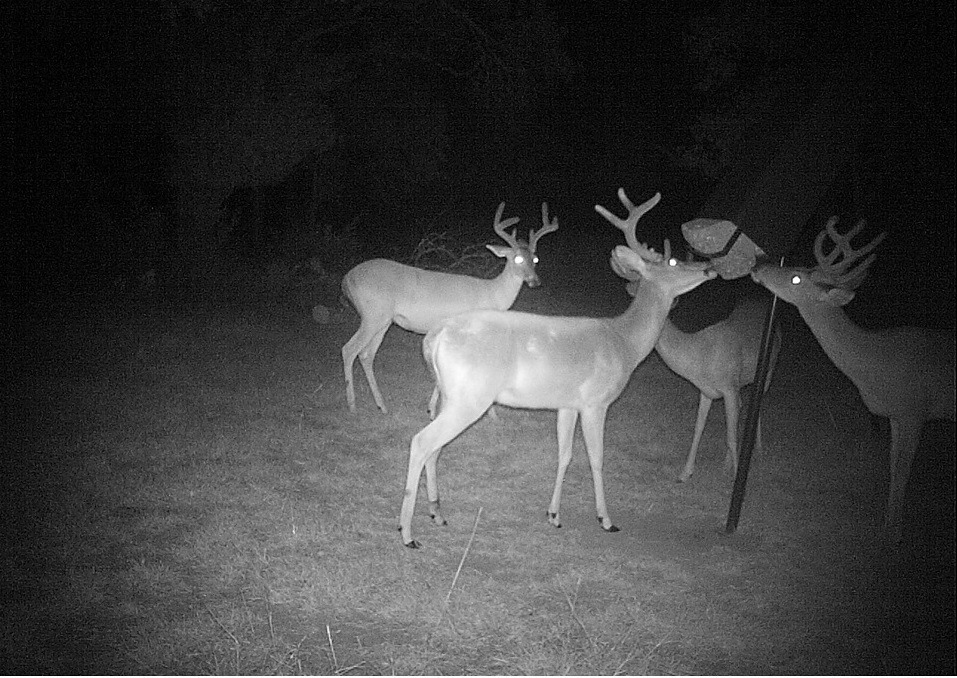
10…20…30 licks?
Taken from a remote camera survey, this photo actually illustrates TWO qualifying Wildlife Management Activities: the Protein Block Feeder is an efficient, low maintenance method of providing supplemental food for deer, while the results from a remote camera survey can be analyzed or used to create harvest recommendations and show population trends in the census category. There are a lot of ways to meet Wildlife Management goals and requirements. Some of them are just more fun and interesting than others!
Want to have one of your photos featured in the ‘Client Photo Spotlight’ section of the next Seasons? Send your photos to Hope Bolton ([email protected]) or simply post them on the Plateau Facebook page!
Back to TopBack to Top
Fall Wildlife Management Activities Activities Checklist
By Kameron Bain, Business Development Manager
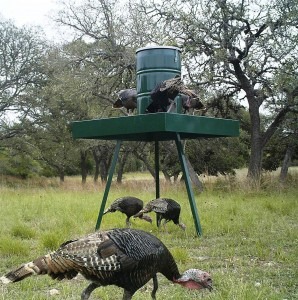
Turkey in Blanco County taking full advantage of Plateau’s Turkey Feeder.
Fall is here, school is back in session, and our everyday lives are getting back to normal. That’s why it’s a great time of year to complete your wildlife management activities. With the end of the year quickly approaching, you’ll want to review your wildlife management plan to make sure you are meeting all your requirements, and properly documenting your activities. If you find that you have fallen behind, there are still plenty of activity options to choose from. Here are some qualified activities that are perfect for completing this fall:
- Wintering and Resident Bird Survey– Start November 15
- Wildlife Management Activities Check-up
- Remote Camera Mammal Survey
- Imported Red Fire Ant Control
- Brush Management
- Re-seeding Wildflowers and Native Plants
- Strip Mowing and Discing – Start November 1st
- Chemical Control of Huisache and Prickly pear
- Cut-stump Herbicide Treatments
- Tree and Shrub Planting – Start late Fall/Winter
- Brush Pile Construction
- Products Installs- Feeders, Water Tables, and Shelter
Back to TopBack to Top
Plateau Announces New Partnership with Cedar Eaters
By Tim Milligan, Director of Sales
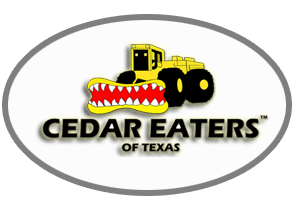 Plateau has recently entered into a partnership with Cedar Eaters of Texas to help Plateau clients implement their brush management needs responsibly, efficiently, and cost-effectively. As a part of this new partnership, and as a courtesy to our clients, we’ll be sending email alerts to let folks know when Cedar Eaters will be in your neck of the woods. By scheduling brush management while Cedar Eaters is in your neighborhood, you’ll save money on mobilization costs.
Plateau has recently entered into a partnership with Cedar Eaters of Texas to help Plateau clients implement their brush management needs responsibly, efficiently, and cost-effectively. As a part of this new partnership, and as a courtesy to our clients, we’ll be sending email alerts to let folks know when Cedar Eaters will be in your neck of the woods. By scheduling brush management while Cedar Eaters is in your neighborhood, you’ll save money on mobilization costs.
Feel free to call Cedar Eaters directly or contact Plateau if you would like to have them contact you. You can reach Cedar Eaters at 210-745-2743 or 877-404-8141 toll free, if you’re interested in a free estimate.
We’ve worked with Cedar Eaters on a number of projects in the past, all with good results, and we currently refer many of our landowners to them whenever there’s a need for the services they offer. They use methods we prefer, leaving organic components on the ground rather than letting them go up in smoke. Cedar Eaters conducts brush management using methods that benefit the land and its wildlife, especially when combined with a well thought-out brush management plan.


If you’re considering brush management in any form in the near future, or want to discuss the services that Cedar Eaters of Texas or Plateau Land and Wildlife have to offer, you can email Stan or Spence Hegener at Cedar Eaters of Texas, or Tim Milligan at Plateau, or give us a call. We’ll be happy to discuss your needs, answer your questions, and hopefully get you on the schedule and moving toward your brush management and habitat improvement goals.
Don’t forget to mention that you received this email when you talk to the folks at Cedar Eaters.
If you want to learn more about Cedar Eaters brush management services and machine rates click here or visit their website at www.cedareater.com.
Notes from the Field: The Davis Mountains in Summer- A Nature-Lover’s Paradise
By Romey Swanson, Senior Plateau Biologist
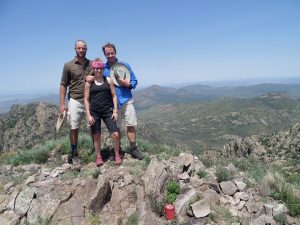
From Left to Right: Wildlife Services Technician Manager, Lee Kothmann, Senior Plateau Biologist, Romey Swanson and his wife, Erin at the peak.
Every summer, I make a trip to the Davis Mountains to escape the August heat we experience here in central Texas and to “re-center” after a typically busy spring and summer season. This may sound counter-intuitive, and it is not uncommon for folks to scratch their head in confusion when I explain that I’m headed west to “escape the heat.” At approximately 6,000 feet, my campsite only briefly experiences 80-degree temperatures during the hottest part of the day. Shortly after sunset, I am searching for a long sleeve shirt or light jacket to prepare for the overnight lows dipping into the 50s. The temperature and solitude are only part the favorable journey, and my field journal provides additional reasons why this area of Texas is one to be treasured and preserved. This year, I was able to share this experience with my wife, Erin, and good friend, Lee Kothmann, Plateau Wildlife Services Technician Manager.
A Quick Note on Why the Davis Mountains are an Ecological Treasure…
The Davis Mountains are located within Jeff Davis County near the center of the Trans Pecos ecological region. This area (along with other mountains in the Trans Pecos) is affectionately referred to as a mountain island surrounded by desert seas. Within Texas, the Davis Mountains contain the largest amount of surface area exceeding 5,000 feet above sea level and peak out at over 8,300 feet.
16 AUG 13
16:00- We arrived at the preserve and registered at the McIvor Conservation Center. While registering, we chose a remote campsite (The Windmill) approximately 5 miles south of the headquarters down a rugged two-track road into Madera Canyon. After several hours of driving during the day, we decide to stretch out, relax, and watch the many hummingbirds buzzing around the feeders maintained nearby. No one in the group was well versed in hummingbird identification, but we were able to identify several Rufus and at least one Black-chinned Hummingbird. Several other species are likely during August, making west Texas a mecca of all things hummingbird.
19:00- After a slow and somewhat rough ride we found our campsite tucked within a small highland meadow surrounded by a pine-juniper woodland. This site was isolated and primitive (besides the old windmill and rusted tank). There was no electricity or running water to distract, forcing all within the group to work towards clarity while surveying a majestic landscape of forested mountain slopes, exposed ridges, talus slides, pinnacled spires, and moist/shaded canyons. We all decided to take a trail run to work out stiff legs before dark.
21:00- The clarity of the west Texas skies is unparalleled in my experience. From behind the western ridges, the sun seemed to unnaturally exhibit its influence, providing ambient light and allowing us to perform cooking and other camp duties, while also providing evening entertainment by washing the lower western sky in remarkable hues of red, fuchsia, amethyst, and indigo. The waxing half moon continued to provide us adequate light throughout the late evening and during our twilight conversations. Shortly after sunset, and while eating supper, our group enjoyed the nocturne of Common Poorwills, Mexican Whip-poor-wills and Western Screech-owls. This nocturnal chorus combined with a cool, gentle breeze through the tops of pinyon and Ponderosa pines provided a lullaby-like condition that facilitated a deep, restful slumber.
17 AUG 13
09:00- After an excellent camp breakfast and readying ourselves for the day’s hike, we set off for the trails intending to summit Mount Livermore by way of the scenic Limpia Chute Trail. Much of the trail climbed through shaded, north-facing canyons, which provided unique habitat for several species of Texas wildlife. Though we paused often to take in our surroundings and investigate small mixed flocks of warbler-sized birds, we quickly arrived at an important point of interest: Quaking Aspen.
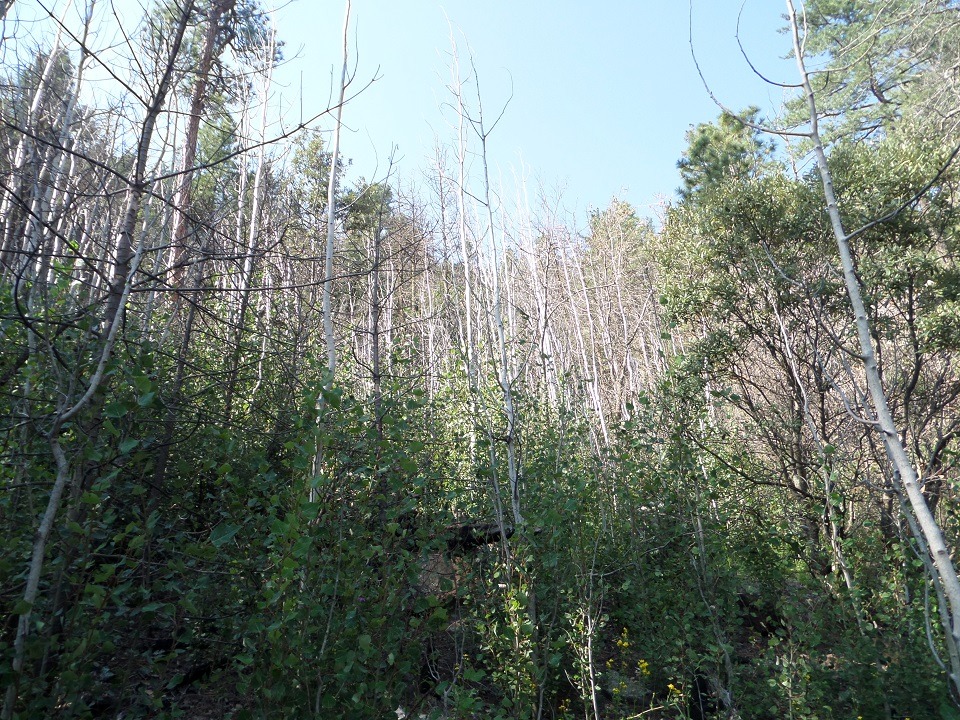
The Davis Mountains, one of the few places in Texas where the white bark and trembling leaves of the Quaking Aspen can be observed.
This site is one of the few places within the state where the white bark and trembling leaves of Quaking Aspen can be observed. Though it is the most widely distributed tree within North America, in Texas, this species is only found within the high country of the Guadalupe, Davis, and Chisos Mountains. This particular stand has suffered from an earlier wildfire but showed vigor in its recovery.
10:30- One of the more active goals of this trip was to get Erin and Lee to identify as many life birds as possible. A life bird is achieved when one observes a particular species for the first time in their life (within my group, we often use life bird, life tree, life reptile, etc. to describe the first observation of plants and wildlife). We enjoyed an active mixed flock of warblers, flycatchers, bluebirds, and other smaller birds while trying admirably to identify and sort everything we saw. We had hoped to find Gray Flycatcher and Grace’s Warbler, both of which have an extremely limited breeding range within Texas (the Davis Mountains are the only known breeding range for Gray Flycatcher in Texas). We dipped (did not observe) on a Gray Flycatcher, but did get excellent looks at a bright male Grace’s Warbler flitting atop a Ponderosa Pine. Other notable species observed within rolling mixed flocks of birds included Virginia, Townsend’s and Wilson’s Warblers, Mountain Chickadee, Olive-sided Flycatcher, Plumbeous Vireo and Hepatic Tanager.
By far, the best observation of the trip was a surprising Red-faced Warbler (RFWA). This species is a mountain specialist that breeds in Mexico, New Mexico, and Arizona. They occur as irregular post-breeding wanderers in the mountains of west Texas, and the vast majority of these observations occur during August. RFWA was formerly considered a rarely occurring species and was included within the Texas Review List. The RFWA was removed from the review list in 2006 as it was deemed an easily identified species that is likely regularly occurring during August within the poorly birded mountains of west Texas. Despite the status change, RFWA is a wonderful and rare observation in Texas and ours likely represents only the second record for the Davis Mountains. In lieu of a photograph, I recorded these notes to document the observation:
“Clear, bright red face, neck, and forehead with continuous black band behind the eye from cheek over the cap to other side of head. Black band bordered by a clear white patch behind and over nape. Back and wings gray overall with white breast. Observed in moist N-facing canyon below the aspen grove on Limpia Chute Trail. No photo but waypoint taken.”
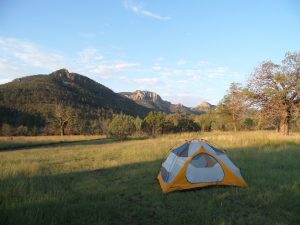
The campsite with Mount Livermore in the background.
12:00- We approach Baldy Peak which, at 8,378 feet, is the highest point on Mount Livermore. The peak is mostly composed of exposed sheer cliff but a less extreme approach is had from the south with a scramble over a talus field providing the final obstacle to 360 degrees of hundred-mile vistas. We can make out the Guadalupe Mountains (including Guadalupe Peak, the highest point in Texas) to the northwest, the Christmas mountains to the southeast, the Chianti Mountains to the southwest, and the Marfa Plains directly south. A Zone-tailed Hawk alerts us to it presence with loud cries, while gracefully soaring at eye level. We decide to take lunch atop the fifth highest peak in Texas. The relatively thin, dry air is cool even at noon and registers in the mid 70s, though the sun is powerful and shade is non-existent atop the peak.
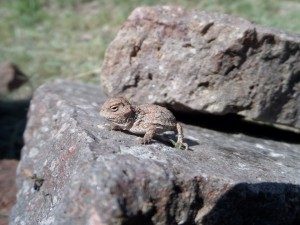
Short-horned lizard, Lee Jr. was found sunbathing near the trail.
Along the trail to Mount Livermore, Lee scared up a greater short-horned lizard. Lee’s lizard was the first of two individuals we came across during the hike. This smaller cousin of the well-known Texas horned lizard differs primarily in habitat preference and along an elevation gradient (>6,000 feet). Short-horned lizards are limited to the Davis, Guadalupe, and Franklin Mountains of Texas. They are unique among our three species of horned lizard in that they give birth to live young, though they share the Texas and round-tailed horned lizards food preference for ants.
16:00- After hiking down from Mount Livermore, we decide to punish ourselves with another medium length hike to see Tobe Canyon and the spring from which it gets its name. The hike in is through a shaded and moist canyon occupied by a pine-oak woodland. We expect but dip on a Painted Redstart and Band-tailed Pigeon. The final mile of this hike is particularly tough on already tired legs but proves worthwhile when we finally reach the wet Tobe Spring. With a LifeStraw water filter in tow, we each take long drinks from this pristine spring and are refreshed by the cold pure water. Golden columbine is in bloom around the source and provides a beautiful backdrop for a peaceful late afternoon siesta.
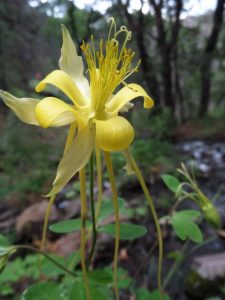
Golden Columbine in bloom
Growing Affiliation with Texas Outdoor Partners Opens Direct Line for Plateau Clients to Texas Legislature
By Craig Bowen, Account Manager, East Service Region

Account Manager, Craig Bowen
I would like to formally announce Plateau’s growing affiliation with one of the most prestigious and effective conservation groups in the nation: the Texas Outdoor Partners. TOP is a coalition of outdoor organizations and private businesses that share common interests in conserving and enhancing land and wildlife. Plateau has been a member of TOP for several years, but recently, I was elected to a 3-year term on the Steering Committee. The TOP Steering Committee is responsible for the direction of the coalition, as well as providing TOP Member Organizations with relevant facts and opinions on various legislative issues to help them adopt an educated stance.
Some History on TOP
In the beginning, 30-35 Texas hunting, fishing and conservation organizations met in January and February of 2007, the beginning of the Texas legislative session, to set up the loose structure and operating procedures for a coalition that was to be called the Texas Outdoor Partners (affectionately known as TOP). The general perception, at the time, amongst hunters and anglers was that the legislature was not fully appropriating sportsmen’s dollars from licenses, stamps, and fees and directing towards conservation work. The groups rallied behind this concern to overcome their traditional separation and independence, and forged a process to work together effectively.
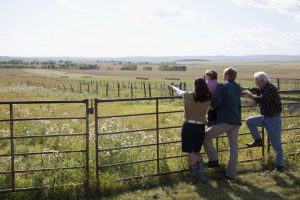
TOP is a coalition of outdoor organizations and private businesses that share common interests in conserving and enhancing land and wildlife.
TOP’s Top Issues
Following the model of the American Wildlife Conservation Partners (AWCP), a national coalition of 40 major hunting organizations, TOP member organizations coalesce on overarching issues, working together and sharing information and ideas, but taking positions ONLY in the names of the individual member organizations – not TOP.
State organizations, state chapters, and regional and local groups have joined the new partnership. It remains a loose knit coalition that has successfully brought the combined sportsmen’s voice to the issues of:
- funding for the Texas Parks and Wildlife Department
- use of the Sporting Goods Sales Tax
- water policy including environmental and in-stream flows
- hunting and angling issues
- land conservation and management practices
- animal cruelty legislation
- protection of hunting and angling
- funding for the expansion of sportsmen’s programs and access
- other critical battles
If you or your contacts know of any issues we should be looking at as a TOP Member Organization, please let me know about the issue and the stance you believe should be taken at a legislative level. We will evaluate these issues in an educated fashion, and report to TOP the most sensible, appropriate position for our organization. Additionally, I will offer updates as they are relevant, including general overviews of current TOP issues, specific legislation to watch, and even educational excerpts on how we recommend voting on certain issues.
Remember, TOP is a direct line to Texas legislators, and it can be your chance to work with and through Plateau to make sure we are doing all we can for conservation, landowner rights, hunting, angling, and the great outdoors.
You can contact me here:
[email protected]
512-571-4305
Mission Mentions: Kameron Bain
By Craig Bowen, Account Manager, East Service Region

“Anytime I have ever talked to her, she has always been upbeat and willing to help” say Plateau client, Don Ringler.
This installment of Mission Mentions comes to you during a great – even record breaking – year at Plateau. We have so many individuals who deserve credit that I could not begin to thank them all. As you know, in Mission Mentions, my intent is to single out one of these outstanding people and illustrate how they are exemplifying the Plateau mission. This quarter, I would like to fill you in on how Kameron Bain, Business Development and Marketing Coordinator, is doing just that.
The Plateau mission statement is:
“to assist owners of rural land in increasing the value of their property by conserving, restoring and/or improving its native wildlife and habitats through science-based solutions and exceptional customer service.”
Normally, I would give you a specific example of something she has done with a particular client, but after talking to several of our clients, I could not find an example that was any better than my own personal experiences working with Kameron.
Who: Craig Bowen, Account Manager, East Service Region
What: Kameron’s overall dedication to customer service and creating a friendly, helpful atmosphere is a model example for everyone in the office.
When: Kameron joined the Plateau family in 2007.
Where: Dripping Springs office
Why: Kameron says, “Plateau has the best clients and the best team. I can honestly say that one of my favorite aspects of my job is helping and talking to our clients. I look forward to catching up with them every year during Service Agreement and Bird Survey seasons. Being helpful to our team is just so easy. I have never worked with a more supportive group of people and many of them have been crucial to my success – when one of them is out of the office, I feel like I am missing an arm.”
To further prove my point about Kameron’s role model-status, Plateau client, Margaret Branton had this to say: “She has been so smooth and efficient I don’t have any stories. Had we had a struggle with something, there might be a story!”
Another Plateau client, Don Ringler, emailed this comment: “Anytime I have ever talked to her, she has always been upbeat and willing to help. If she is having a bad day, she never lets it show. She does what she tells you she is going to do and when she told you she would. Her emails are the same way: timely and informative. She has always been willing to help and if she can’t, she will get whoever can in contact with you.”
Back to TopBack to Top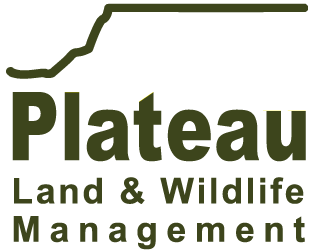






Sorry, the comment form is closed at this time.